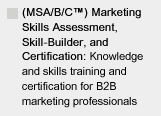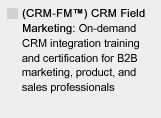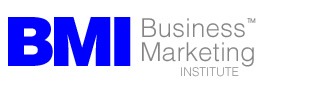MAKE SURE YOU CONTINUE TO RECEIVE EACH ISSUE OF TUESDAY MARKETING NOTES—CLICK HERE TO RENEW YOUR FREE SUBSCRIPTION (IF YOU'VE ALREADY SUBSCRIBED, NO NEED TO RE-SUBSCRIBE)

PR Doesn't Stand for Press Release
by Ford Kanzler
Someone needs to stand up against press releases. This may sound strange coming from a PR guy but lots of business people, and probably your friends in the media, think writing and issuing press releases are all marketing managers and PR pros live for.
Ironically, when creating an effective public relations program, press releases may be among the last things you need to worry about. Nor does a whole string of press releases issued on a weekly basis mean you’re creating an effective publicity program.
Yes, the "Press Release Production" approach to public relations will probably get your organization some coverage. But that technique often entirely misses the point of what's news and more importantly how public relations works to strategically build and maintain awareness and credibility.
Even in our "instant everything" culture, building a company's reputation and developing strong media relationships isn't accomplished in a quarter or two. With wary media, it can take years and be destroyed in seconds. Reporters, editors and market researchers are burned on a regular basis and lied to weekly. Their trust is earned over time, not by covering up them with press releases.
Listen what most editorial people are always telling public relations pros: "read my publication or blog." Understanding a publication’s informational needs is essential. Ignoring it alienates editors, reporters and writers.
Never Cry Wolf
"Getting ink" or “hits” is a purely tactical approach that may, or may not, help further a company's business goals. It may temporarily boost a stock price. But very quickly the media and the analysts tracking your market sector will tire of the publicity storm of e-mail spam. Stuffing their in boxes immediately has the reverse effect of their ignoring everything from the offending organization and likely blocking any further communications.
Issuing too many news releases is the equivalent of crying wolf. Most media people are already getting way too much stuff from too many companies—most of which they can't use and wouldn't even if they had ten times more time or editorial space.
Press releases remain today's single most over-used and abused public relations tactic. Whatever happened to the concept of using the press release as a "silver bullet" when you have really significant news rather than something amounting to “my cat had kittens?” Today's all too prevalent shotgun media relations approach ignores the "relations" part of the profession as well as the "news" part of news release.
Automated distribution techniques and services help further alienate professional business communicators from the media they should be attempting to understand and perhaps influence. Some PR people attempt to automate the media relations process as if they were canning vegetables. Contract services exist to handle press release distribution. This is work that PR people should be doing themselves, not outsourcing. Effective PR pros know or should find out exactly who wants their clients' or employer’s news, not delegating it to a vendor. Don’t get me wrong, wire services like PR Newswire, Business Wire or Marketwire are fine for posting releases to online news hubs and getting into databases. But don't be mistaken that it's a substitute for alerting, pitching or perhaps even getting to know reporters, editors and analysts important to your market.
Believe it or not there even some media people who aren't avid email users. They may even prefer postal mail. A hand-addressed letter or labeled envelope with a note saying, "information for your next feature article on such and such" is often the best way of getting your news into the right hands. In contrast, some media folk "don't do mail"—period. You must not only know what they want, but how they want it.
The attitude of "some new releases are good, so more are better and the most must be the best," pervades thinking. This entirely ignores the way publications and journalists think. Publicity isn't the "tonnage" business. ("Hey, you know what, we sent out 400 news releases last week! That’s 50 percent more than the week before!") We're really in the semi- and full-custom information development and supply business. Most often, "less is more."
The Press Release Slam-Dunk
I understand why some people think automated news release services are useful. Since sloppiness and laziness in distributing releases is prevalent, the practice of just grabbing an entire category out of a media directory and sending every release to the entire list is far too common. But the topic of contact database maintenance in media targeting is a whole other article. Use a rifle, not a shotgun.
Building "Media Relationships"
Real PR pros do the work and earn a solid reputation each time they begin working in a new business sector. They correctly and precisely identify the correct media and analyst contacts with news they can use rather than giving that responsibly away. It’s during the give-and-take of talking to media and analysts that relationships are built, not by automating it. If there are too many press releases going out for you to directly contact your top-tier media, then maybe that's telling you something about how much stuff your organization is pushing on the net to too many outlets.
I’m guessing somewhere, perhaps in business schools around the country, instructors are telling Business Administration majors or MBA candidates that public relations equals dreaming up and distributing press releases to the news media…as fast as you can. Unless you're the IBM, Intel or Cisco of your market, most media outlets won't use more than one item per news cycle from any organization. So, if you're sending two, three or more releases in a given week or month, expect most to not get used.
One of the main problems with overdosing the media with too many press releases is the editors have to chose which one to use. Send them several in a short period and they may run one of lesser value rather than another you were really hoping to see published. But you shot yourself in the foot by sending out too many in the first place. Again, less is more. Its understood that public companies must transmit relevant business news to conform to SEC regs and sometimes that causes too much output in too little time.
Press releases can have tactical value but use them judiciously and at a rhythm that your target media can digest. After all, PR doesn't stand for press release.
Ford Kanzler—ford@prsavvy.com—is managing partner at Marketing/PR Savvy in El Granada, CA, an agency that often recommends its clients do fewer press releases and try some of the many other highly effective PR tactics available to marketers.








